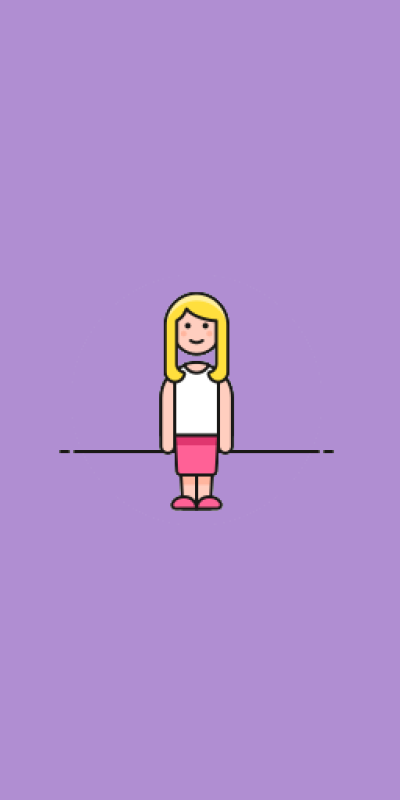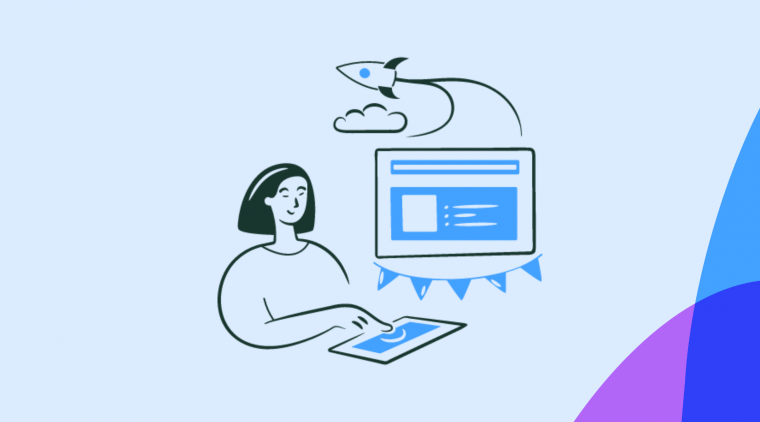Marketing to users inside the product is like lighting a campfire.
You don't try to burn every log at once, because it's hard to get a big chunk to catch on fire. You focus on getting the twigs and kindling lit first so the fire can grow.
In short, you see success by using the right methods on smaller segments of a whole rather than a blunt one-size-fits-all approach.
Campfire metaphors aside, having clear and methodical user segmentation inside your product is crucial for effective product marketing campaigns that drive feature discovery, upsells, and adoption.
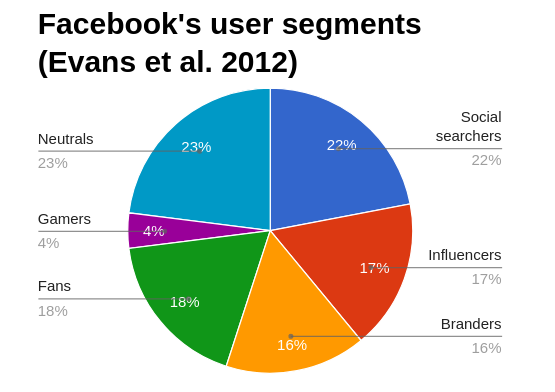
Why user segments matter
Every user is different, with unique needs and goals. And since modern CRMs and product marketing tools allow such detailed segmentation, you should take advantage of it.
Why? Because according to Mailchimp, segmented campaigns drive 100% more clicks. Our data indicates that the engagement rate with in-product prompts is 10x higher than even that.
According to ProfitWell founder Patrick Campbell, untargeted marketing can mean doom for SaaS but is a common problem:
"Under 10% [of SaaS companies] have actually quantified their buyer personas. About 90% are missing out on real opportunities to improve marketing, support, sales, and bottom-line revenue. Customers won't understand your product's value proposition and won't be able to pay for the value that they want."
In this article, we will break down the 7 most important user segments. But be aware - we’re talking about segments you can create based on who a user is and what actions they have (or haven't) taken.
Unlike other guides on the topic, this is not about generic user segments that are based on demographic or geographic data.
What's more, every user segment will be backed up by examples from great companies, found out in the wild!
7 user segments to focus on
Below are the segments we'll discuss in this guide:
- New users
- Users that haven’t engaged with a core feature
- Users by persona
- Lifetime free users
- Users with low MRR
- Loyal users
- Inactive users
Necessary preparation for user segmentation
Since this is not the main topic of the article but is a necessary step, here’s a short primer you should use before you start creating your first user segments.
-
Set up your business priorities - you should have clear insights into your goals and desired outcomes - product managers usually use the following KPIs to identify business goals and determine future user segments:
- Acquisition source
- Customer lifetime value
- Monthly recurring revenue
- Retention rate
- Churn rate
- User activation rate
- User adoption rate
- Free trial conversion
- Customer journey milestones
- User onboarding stages
- Track the in-app behaviour of your users - without this, you can’t group people by different user segments
- Collect the right user attributes. Here are some of the data points you should look at:
- Company
- Company size
- Job title
- Demographic data
- Geographical data
- Goals
- Number of team members who are using your product
- To engage with segments inside your product, get set up with a user onboarding and product adoption tool like Chameleon or build a way to deliver in-product messaging to segments in-house.
Now you’re ready, let’s dive deep into each of the 7 in-app user segments you might use for your product marketing campaigns.
New users
signup date < X days/hours/minutes ago
Perhaps this is most obvious segment, but it's also one of the most important because first contact with a product is a fragile thing. If your product is confusing or its value isn't quickly apparent, a user will more than likely leave and never come back.
The best way to engage, educate, and market to new users is to deploy carefully planned user onboarding flows inside and outside your product. The purpose of user onboarding is not to show off all of your amazing features, but to make your customers say: “Wow, I can really benefit from this tool!” before they churn.
From the moment when your user signs up, your first goal is to lead them towards the “aha moment”, and then deepen engagement by prompting them to try core features. It's a combination of education (what do I do?), and marketing (why should I care?).
Let’s see how successful software companies are engaging with their new users.
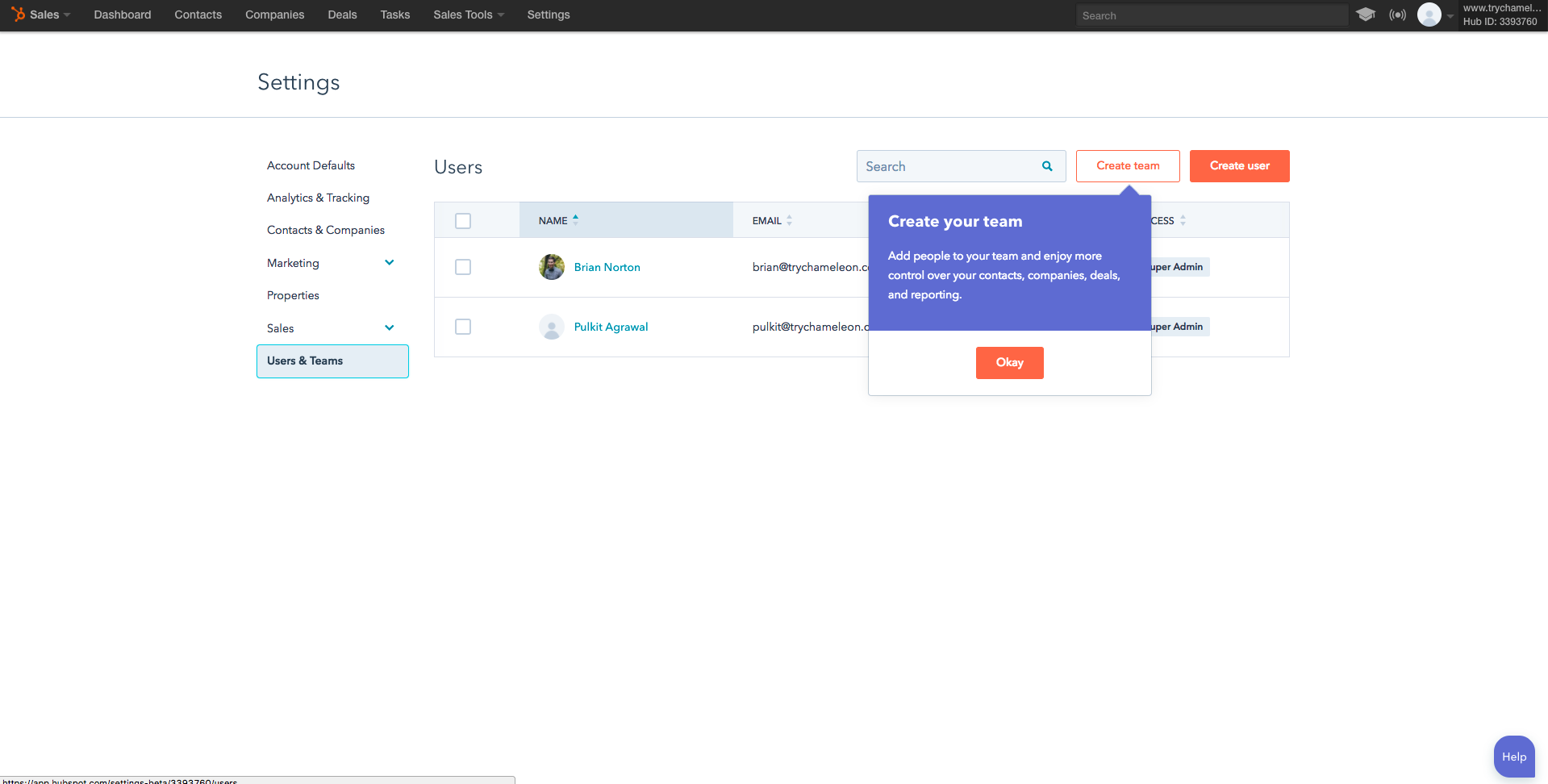
HubSpot uses tooltips to make new users familiar with their core features.
Tooltips are a great way to lead your new users through your product and show them the most important things without the pressure of comprehending long text, and distractions that come with a user manual.
Make sure that you don’t have too many tooltips in a row; our data suggests that 3 or 4 is the most users are willing to read, and that engagement drops by half when you introduce a fifth.
For this reason, try to be concise and straightforward. Show users only the most important things, alongside compelling reasons why they should care.

StoryChief uses a checklist to onboard its new users.
Checklists are an extremely powerful way to lead your users and help them to set-up their account and start using your product.
This is because checklists leverage the Zeigarnik effect - a psychological bias where people have a better tendency to remember uncompleted tasks rather than completed ones.
Users that haven’t engaged with a core feature
has not done [event] at any time
Of course, there will always be some group of users who haven't made any contact with your core features or who are not activated at all.
Don’t worry if you have some of them. No matter how hard you try, it's unavoidable – but you can always try to reduce this number and re-engage inactive users.
The go-to way to engage with users who aren't using your core features is with transactional emails.
Logically, you can’t reach out to them through your product because they probably aren’t in it. So the next best spot to go is their inbox.

Grammarly an online tool for proofreading. It has its own online platform, but certainly one of the most important features is its browser extension.
When Grammarly sees that a user didn’t install that extension, they send this transactional email to that user segment.
What can we learn from this email?
- It’s personalized
- Great design makes it easy for users to consume it
- It surfaces the most important features of their browser extension
- They have a really clear and straight-forward CTA
On the hand, if you have users who left your product and haven't come back for a while, you might send them something like this:
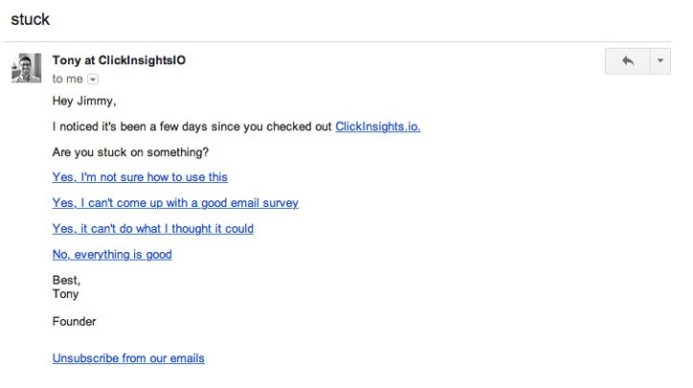
This is a great example of two things:
- A strong, value-based email that helps your customers even if they didn’t ask for it
- Collecting feedback and understanding the reasons behind the churn
In any case, a chunk of disengaged users is inevitable. You will always have some amount of them, so it's up to you to define that segment and make the most out of it; according to ThinkJar, it's 6 times cheaper to retain a customer than acquire a new one.
Users by persona (job title, goals, etc.)
Although you probably have an ideal buyer persona in mind, it won't always match the people who are actually using your product.
For a lot of products, people will come to you with a different background or with different goals. With that baked into your strategy, you can create targeted messaging by marketing your product in a way that is personalized to their type of user persona.
Here are a few persona segments you can create:
- By title - if your product is used cross-departmentally or by users of different heirarchy in the org - for example, product managers and customer success managers. Build different user onboarding flows and in-app experiences that speak to the role's goals and experience level.
- By company type - if you have solutions for different types of companies - for example, those selling desktop products vs. companies with mobile apps
- By country - especially if you are a B2C company, segmenting your users by the country of origin can be really usefull since you can show them different local-based in-app events
- By company size - feature usage and user priorities can differ depending on whether a company is big or small - for example, enterprises might need to add dozens of team members for the product to catch on, while small companies don’t
- By goals and desired outcomes - what are your users looking to achieve?
One of the best ways to collect data about your users and get to know them is when they first sign up.
Check this Airtable modal for an example:

Airtable collects the four most important data points about its users:
- Why do they want to use Airtable?
- What’s their company type?
- What’s their role in the company?
- How big is the company?
By capturing answers to these questions, Airtable is able to create better and more personalized in-app experiences, like offering templates relevant to the user's job function.
Hello Bar’s in-app prompt is another great example of this.

Once you create a Hello Bar account, this prompt will be the first thing you will see.
Implementing in-app modals inside your product like this one will help you to segment your users by their goals, and later personalize their user onboarding by their desires.
Lifetime free users
user plan = free
The fourth example of how to create product user segments is to put them in two groups: free and premium.
Without a doubt, both free and paying users have different needs and demands. It’s your job to serve them all because today's free user could be tomorrow's paying customer.
Nowadays, a lot of new SaaS businesses are based on the freemium model - and naturally, that can mean they support a large amount of lifetime free users, like Trello and Slack.
For example, according to Search Unified Communications, there are more than 8M people who are using Slack every day, while 5M of them are considered as free users - a huge percentage.
It’s good to have free lifetime users, because they will organically spread the word about your product. But what can we do to convert them?
Lifetime free users will not have the same access and functionality as those who are paying you, so your best bet to convert them is to make them need your premium features.
For example, free Trello users can only have up to 10 boards.
Trello pushes to convert their lifetime free users by showing them an upsell prompt at the top of the screen:

If you don’t have a free plan but want to upgrade trial users to use your premium packages, you can use something like this:

Baremetrics’s trial prompt shows urgency and offers its trial users the opportunity to book a demo of the premium account and to see all of its advantages.
Users with low MRR
user plan = basic
This user segment is very similar to the previous one, except that in this user segment we have people who are already your premium customers, but on the cheapest plan.
Targeting this segment to upsell more features and bigger packages will certainly help you to grow your revenue and their “addiction” to using your product.
The approach of upselling features is very similar to free trial conversion; the only difference is that here you need to pay a little bit more attention to the customer’s education, use cases and unique value offering.
The best opportunity to upsell features to your existing customers is when they actually need them.
If you prompt users in context, saying: “This amazing feature does X. Here's why it's useful, and it costs only Z”, you won’t be too far off the mark.
That’s the reason why feature adoption requires context-based in-app experiences.
Let’s take a look at this example from Delighted:
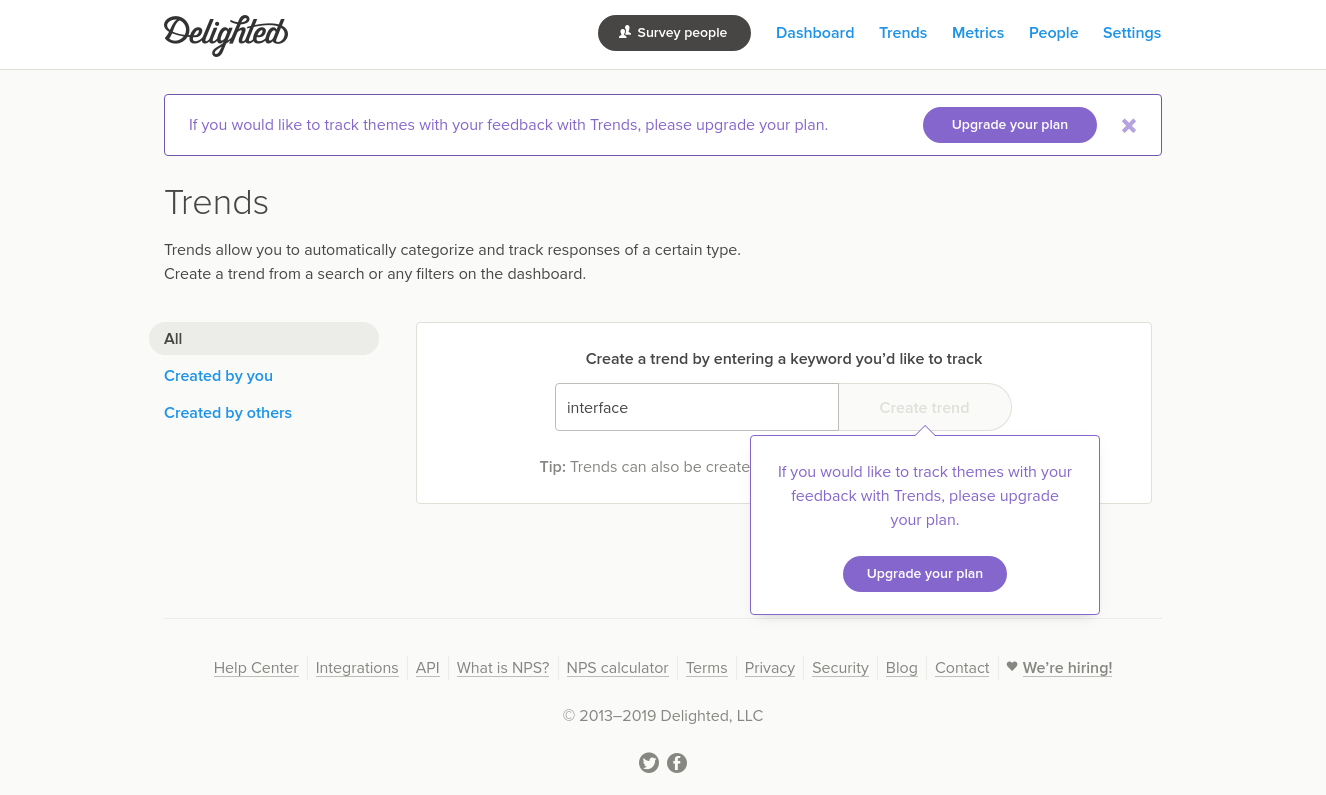
When Delighted’s customers want to track themes with trends, they will see a disabled option for it.
Here we can see the banner and a tooltip that shows why this particular feature is disabled, and what it does. As we said, the key to a successful feature adoption is showing the right messages to the right users at the right time.
Another great example of upselling premium packages and feature adoption comes from Asana.

Asana’s customers see this modal only when they try to use a feature that is shown in the UI but not included in their payment plan.
This beautifully designed modal explains to the user why exactly this feature is disabled, how it could change their life, and what they need to do.
However you choose to upsell premium packages, having a segment with customers who have the cheapest packages is a must if you want to push for higher conversion rates. At the end of the day, your goal is to have as much as possible high-paying customers. Right?
Loyal users
nps score >= 9
We’ve talked through targeting new users, lifetime free users, and users who pay for the smallest package – but what about those who have high MRR and who enjoy using your product day-to-day?
Can we drive results from these too, or is their journey through our sales funnel is over?
The end goal of every sales funnel is to create brand ambassadors and affiliates from loyal customers, and the industry-standard way to determine who is very likely to promote your brand is to run a Net Promoter Score campaign inside your product.
Whenever your customers see success with your product, you can send them an email and ask them to give you their opinion, or simply ask inside the product.
Here an example of an email asking for an NPS rating.
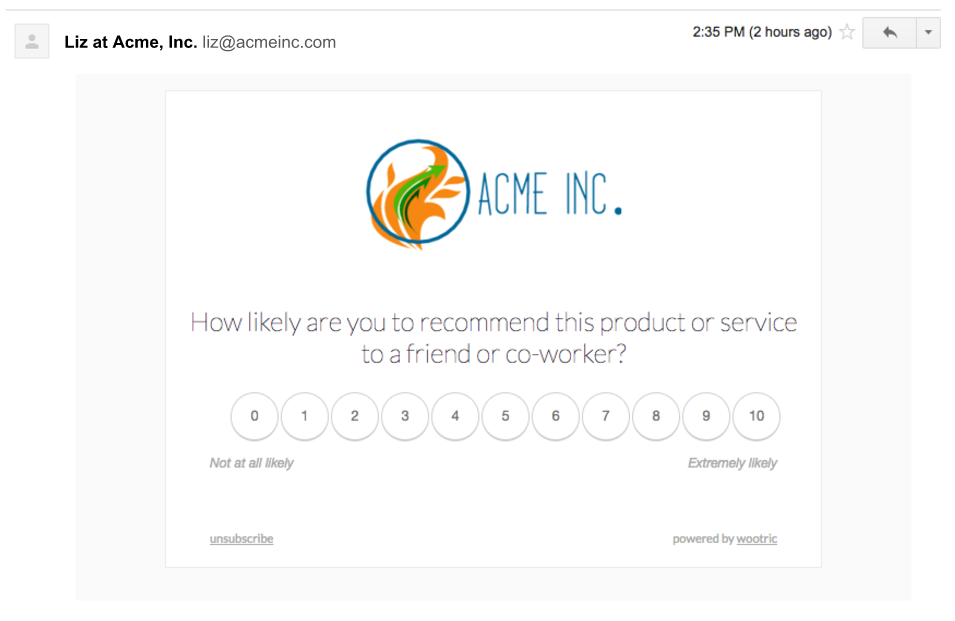 (Source)
(Source)
Whenever your customers respond with a score of 9 or 10, it usually means that they are very likely to promote your company - reach out to them personally and ask them to share their experiences with the world.
Inactive users
user has not started a session in the last X days
Churn always occurs. It’s almost impossible for it to be zero. Even if your customers adore your product, there are chances that they will drop off due to a failed credit card or bankrupt business.
But, on another hand, there will be customers who will become unsatisfied with your product or who simply don’t need it any longer.
The process of re-engaging inactive users is very similar to methods for marketing to users that didn't yet engage with core features; the best way to reach out to them is through email.
Just like Skillshare:
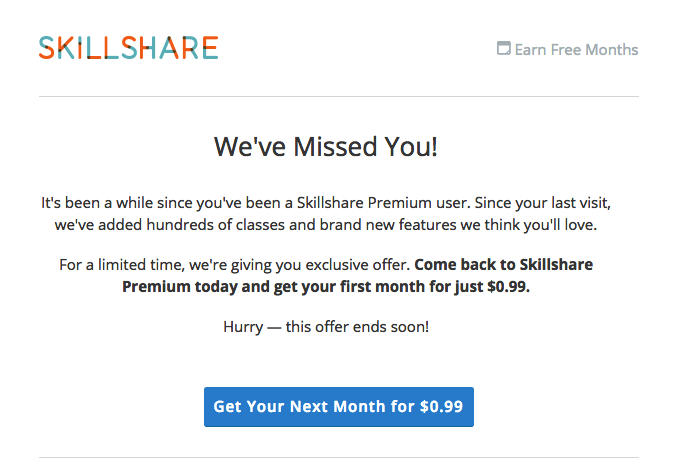
If you somehow don’t manage to persuade your churning customers to actively use your product again, here's an example of leveraging that situation for feedback or possible re-conversion.
Here, YesInsights gives its customers more options besides cancellation and improve their retention:

If they still want to cancel their subscription, at least, you can take the opportunity and ask them for the honest cause of their leaving - like Tony from ClickInsightsIO (you can find that example in this user segment).
Wrap up
In any case, having carefully planned user segments is crucial if you want to improve your product marketing, reduce churn, improve retention, onboard and adopt more users.
Each of these user segments has different needs. In that case, every user segments demands a different approach.
We’ve covered a lot of successful examples of marketing your product across 7 different user segments, and hope this has helped you get started with a more targeted in-product marketing strategy.
If you still need a little bit more inspiration to create amazing in-app experiences that will serve to some user segment, you can always visit our inspiration gallery, where you can find a ton of successful user onboarding and feature adoption examples from top SaaS companies.
To take it a step further, try Chameleon. Chameleon provides segments by default and can pull in data from your analytics platform to target users based on what you already know. To get started building targeted and high converting in-product prompts, request a demo now.
